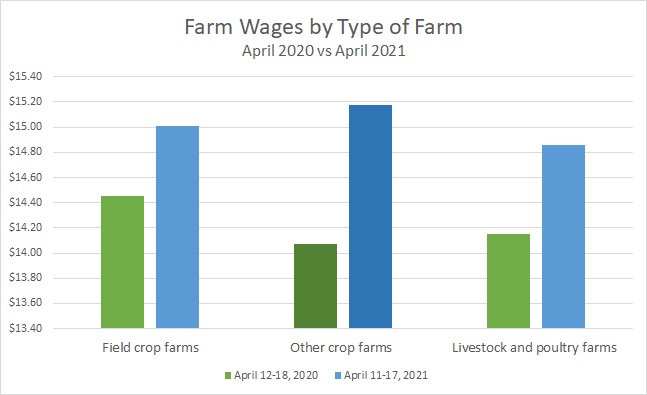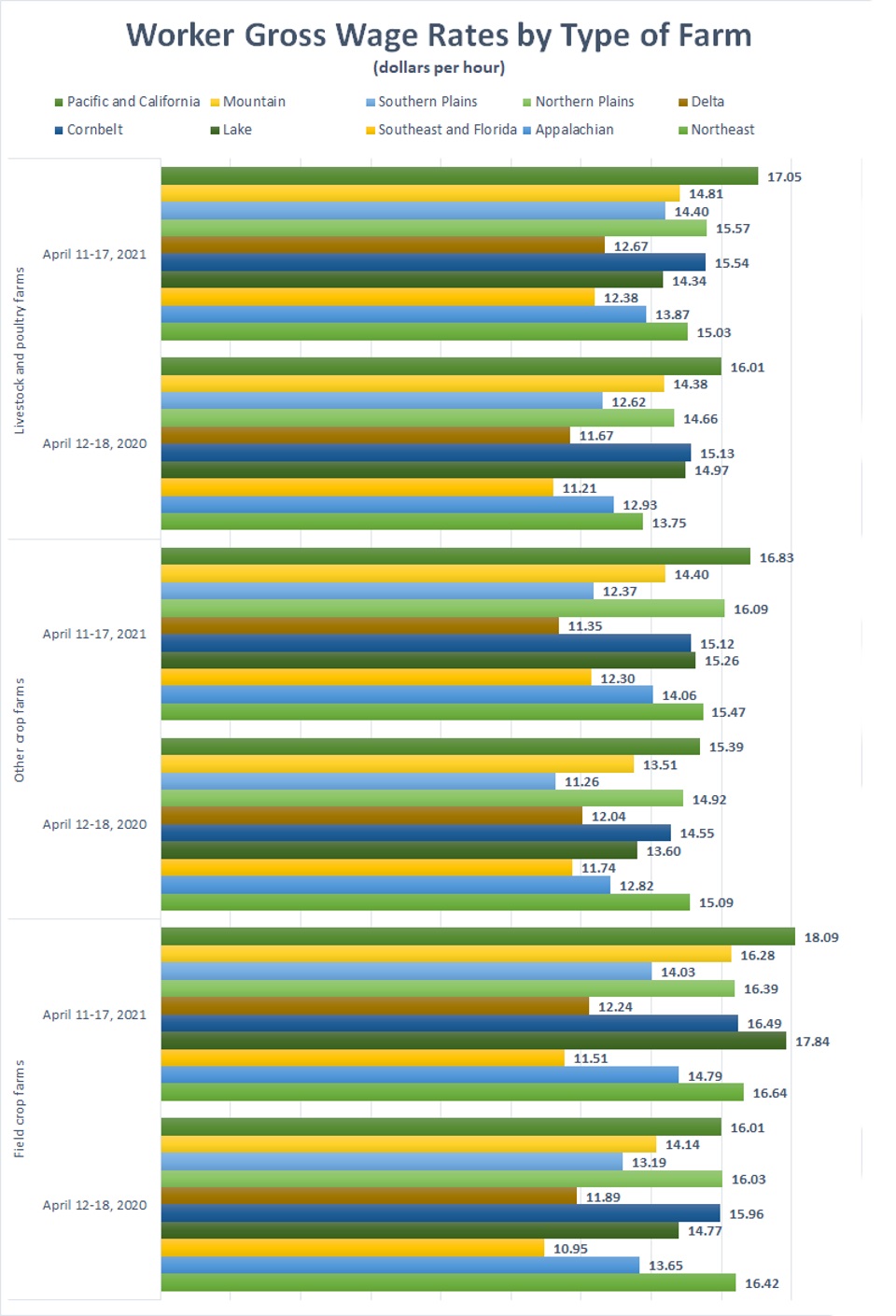Number of U.S. Ag Workers in 2021 Has Declined 11%
Ag wages are up and the number of workers are down as of April 2021, USDA reports.
Each year, USDA checks in with U.S. farms about their labor every quarter. The Department collects information on the number of workers and wages for a week in January, April, July, and October. It includes all ag workers, for crops and livestock, within the 48 contiguous states (USDA does not include Alaska or Hawaii in the data).
Overall, farm operations hired 613,000 workers during the week of April 11-17, 2021, down 11% from the same week in April 2020. Average hours worked per week by worker, however, is similar to 2020’s average work week — 40.9 hours/week compared to 40.3 hours/week in April 2020. Farm operators paid their hired workers an average wage of $15.97 per hour in April 2021, an uptick of 6% from April 2020.
Specialty Crop Farm Labor Stats
USDA breaks some of this data down by three types of farms: field crops; livestock, dairy, and poultry; and “other crop farms.” Produce, nut, ornamental, hops, herb, and maple farms all fall into the “other crop farms” category. In April 2021, other crop farm workers made up more than half of all ag workers — 52%. The category’s share grew by four points over the same period in 2020.
In April 2021, other crop farms’ workers earned more per hour ($15.18) than either field crop farms ($15.01) or livestock operations ($14.86). That wasn’t the case in 2020, when other crop farms reported the lowest hourly wages of the three. In fact, other crop farms paid their workers more than a dollar more per hour over 2020, $15.18 vs. $14.07.

Naturally, regions varied widely in their hourly rates. Field crop workers on the West Coast earn the most, coming in at $18.09 per hour. That highest rate is $1.67 per hour higher than 2020’s highest rate ($16.42 per hour for field workers in the Northeast). Other crop farms in Louisiana, Arkansas, and Mississippi currently pay the lowest hourly rate, only $11.35.
Here’s how wages break down by type of farm and regions:

USDA lists the states included in each region:
- Pacific and California – CA; OR; and WA
- Mountain – AZ; CO; ID; MT; NM; NV; UT; and WY
- Southern Plains – OK and TX
- Northern Plains – KS; ND; NE; and SD
- Delta – AR; LA; MS
- Cornbelt – IA; IL; IN; MO; and OH
- Lake – MI; MN; and WI
- Southeast and Florida – AL; FL; GA; and SC
- Appalachian – KY; NC; TN; VA; and WV
- Northeast – CT; DE; MA; MD; ME; NH; NJ; NY; PA; RI; and VT









